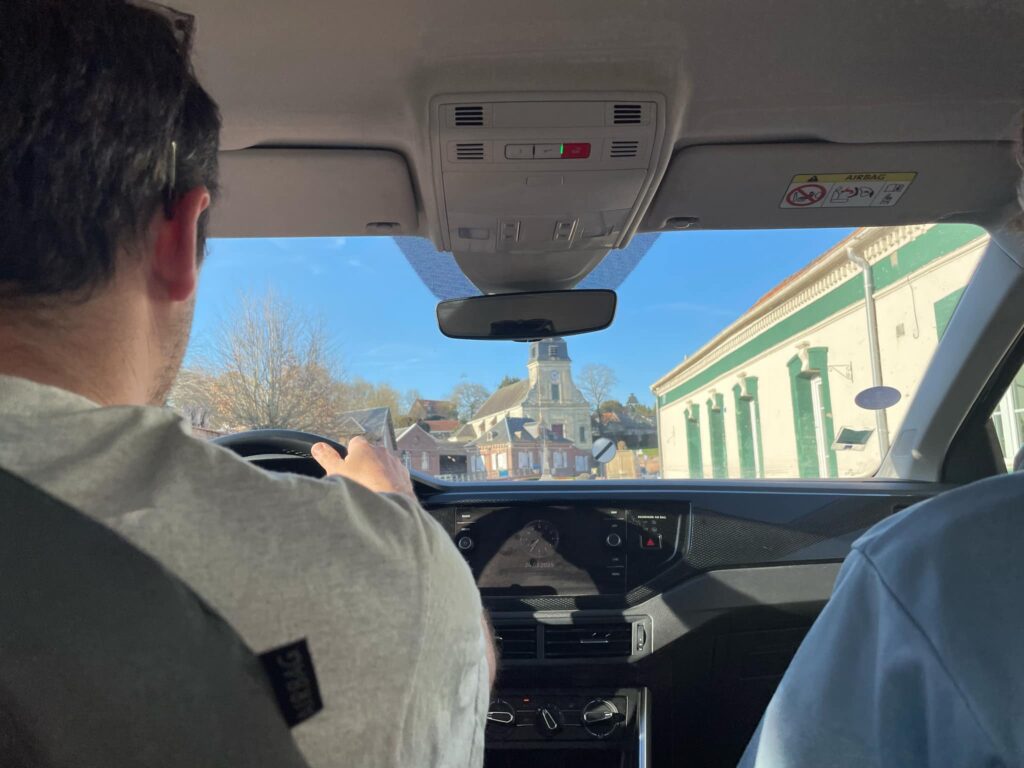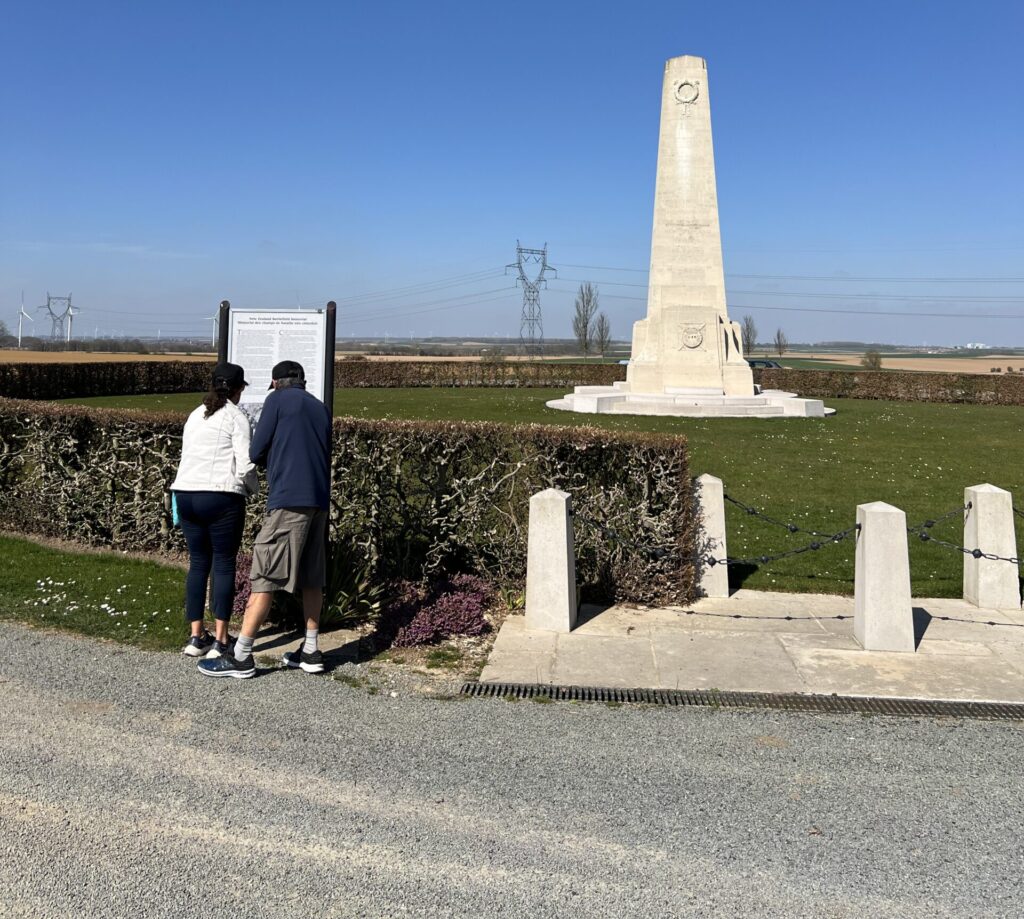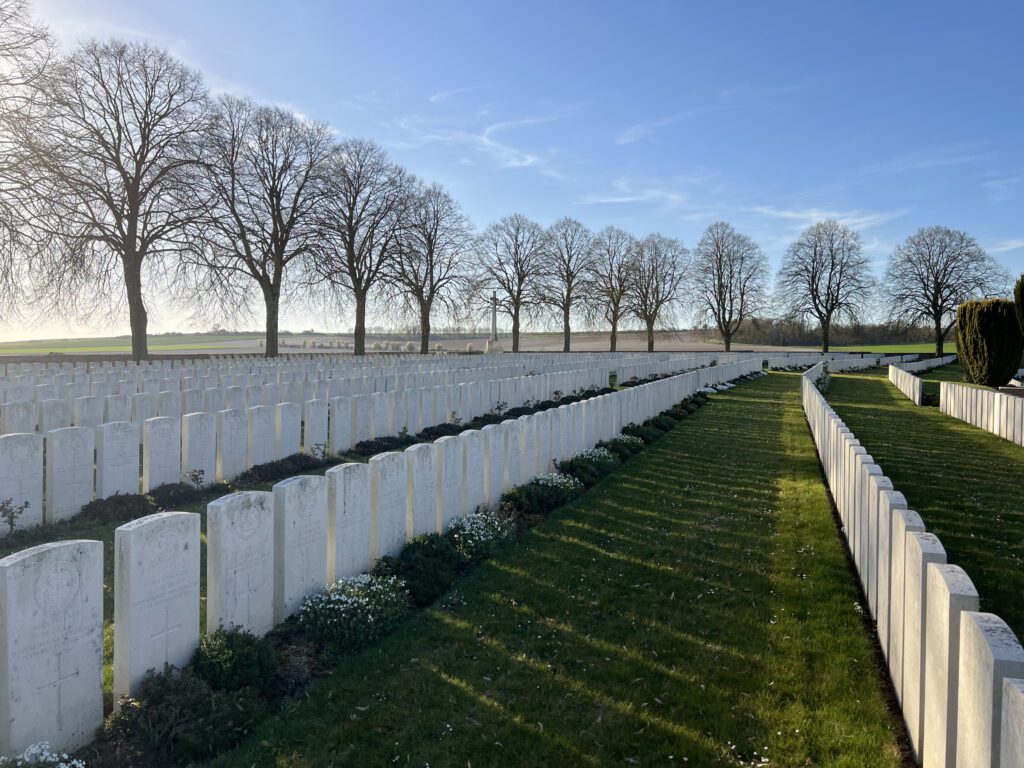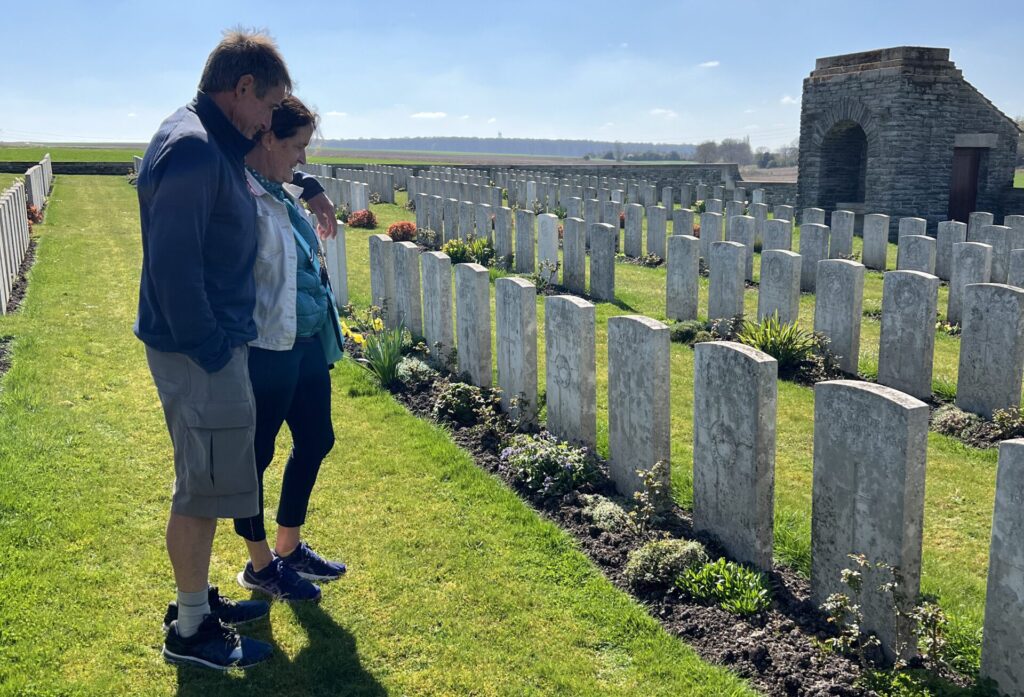Private Ailbe Aldridge and Sergeant Stanley Boundy both died during the Battle of the Somme in September 1916. Stanley fell on the 15th aged 25, and Ailbe four days later, at just 24 years old.
While it’s likely the Kiwi soldiers never met each other back then, almost 100 years on, they are connected by their great niece Joanne Parsons, who visited their final resting places in March.
The story goes that both Stanley and Ailbe had sisters, those sisters went on to marry and become Joanne’s grandmothers.
“In 1916, my grandmothers were both 16 when their brothers were killed in France,” recounts Joanne. “The two women only met when my mother and father were ‘courting’, I suppose, in the early 1950s.”

During Joanne’s recent visit to Northern France with husband Phil, as part of a long-awaited European trip, the South Canterbury couple started their journey at New Zealand’s tūrangawaewae on the Western Front, the New Zealand Liberation Museum – Te Arawhata in Le Quesnoy. Both were moved, not only by the museum and Le Quesnoy’s imposing ramparts, but by the kind and accommodating local people.
While in Le Quesnoy, Joanne and Phil enlisted the help of Te Arawhata marketing and operations manager, Jacob Siermans, as their tour guide for a day which included visiting the final resting places of her great uncles Ailbe and Stanley.
The trio’s first stop was Bulls Road Cemetary near Flers which was the site of a key New Zealand victory. Among the 122 graves was Whanganui born Stanley. Stanley worked as a postal clerk before enlisting and joining the New Zealand Rifle Brigade, the same regiment that would liberate Le Quesnoy two years later. He was the brother of Joanne’s paternal grandmother.


The next stop was the New Zealand Memorial at Longueval, marking the location where Stanley and his fellow Kiwi soldiers would have gone over the top on 15 September. This was the first action seen by New Zealand forces on the Western front and the day Stanley died.
Despite suffering significant casualties, this first foray on the Western Front is considered a victory for the New Zealanders, and they managed to make significant advances on the town of Flers in what was the first battle to ever use tanks.
After visiting Stanley, they stopped at Caterpillar Valley Cemetary which is a few kilometres from Longueval and home to a memorial honoring the 1205 Kiwi soldiers who went missing during the Battle of the Somme and have no known grave.
From there, the trio drove to the Sir John Monash Centre – Australia’s home on the Western Front – in Villers-Bretonneux. With its immersive and confronting displays demonstrating the horrors of battle, the Centre provides a different perspective on the war from Te Arawhata while both are equally as moving.


With the sun dipping lower, Joanne, Phil and Jacob finally made it to Dernancourt Communal Cemetery Extension to stand before Ailbe’s grave.
Ailbe Aldridge lived in Hastings before embarking for Egypt in 1915. He was wounded in the initial days of the New Zealanders’ time on the Western Front and died on 19 September 1916.
He lies with 49 other Kiwi soldiers at Dernancourt.
Visiting Ailbe’s grave was a sobering experience for Joanne, especially because his last living nephew died just weeks earlier.
Joanne attended the funeral before heading to France, an experience which strengthened her desire to learn more about her great uncles and their previously unknown connection.

“I wonder if they knew how close the two cemeteries are, where their brothers are buried”, Joanne says of her grandmothers. “Now I’ve been to visit the cemeteries it has put things more into perspective.”
